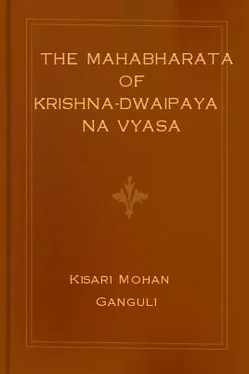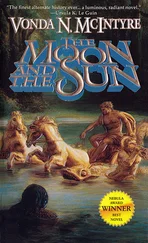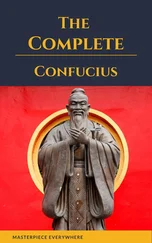Kisari Mohan Ganguli - The Mahabharata of Krishna-Dwaipayana Vyasa
Здесь есть возможность читать онлайн «Kisari Mohan Ganguli - The Mahabharata of Krishna-Dwaipayana Vyasa» весь текст электронной книги совершенно бесплатно (целиком полную версию без сокращений). В некоторых случаях можно слушать аудио, скачать через торрент в формате fb2 и присутствует краткое содержание. Издательство: ManyBooks.net, Жанр: на английском языке. Описание произведения, (предисловие) а так же отзывы посетителей доступны на портале библиотеки ЛибКат.
- Название:The Mahabharata of Krishna-Dwaipayana Vyasa
- Автор:
- Издательство:ManyBooks.net
- Жанр:
- Год:неизвестен
- ISBN:нет данных
- Рейтинг книги:3 / 5. Голосов: 1
-
Избранное:Добавить в избранное
- Отзывы:
-
Ваша оценка:
- 60
- 1
- 2
- 3
- 4
- 5
The Mahabharata of Krishna-Dwaipayana Vyasa: краткое содержание, описание и аннотация
Предлагаем к чтению аннотацию, описание, краткое содержание или предисловие (зависит от того, что написал сам автор книги «The Mahabharata of Krishna-Dwaipayana Vyasa»). Если вы не нашли необходимую информацию о книге — напишите в комментариях, мы постараемся отыскать её.
The Mahabharata of Krishna-Dwaipayana Vyasa — читать онлайн бесплатно полную книгу (весь текст) целиком
Ниже представлен текст книги, разбитый по страницам. Система сохранения места последней прочитанной страницы, позволяет с удобством читать онлайн бесплатно книгу «The Mahabharata of Krishna-Dwaipayana Vyasa», без необходимости каждый раз заново искать на чём Вы остановились. Поставьте закладку, и сможете в любой момент перейти на страницу, на которой закончили чтение.
Интервал:
Закладка:
82. Kshatriya-bandhu always implies low or inferior Kshatriyas, as Brahma-bandhu implies low or inferior Brahmanas. The expression, very probably, is similar to Brahman-sangat in current Bengali. It does not surely mean 'kinsmen of Kshatriyas'.
83. The vocative, 'O foremost of regenerate ones' applies to Jamadagni's son. The narration is that of the Pitris. All the copies, however, represent this as the Brahmana's speech to his wife. Indeed, the Brahmana is only reciting to his wife the speech of the Pitris to Rama. The Yoga here spoken of is, as Nilakantha explains the Raja-Yoga. Previously, Alarka had been bent upon Hatha-Yoga which frequently ends in the destruction of the person practising it.
84. Praharsha, rendered 'exultation', is explained by Nilakantha as the joy that is felt at the certainty of attaining what is desired. Priti is that satisfaction which is felt when the object desired is attained. Ananda is what arises while enjoying the attained object.
85. The sense seems to be this. Having first conquered the internal foes mentioned, the man of intelligence, bent on effecting his deliverance, should then seek to vanquish all external foes standing in his way.
86. Nilakantha explains that dosha here refers to attachment, cupidity and the rest; while Sadhu implies not men but the virtues of tranquillity and the rest.
87. think Telang renders this verse wrongly. Samhatadehabandhanah does not mean 'with bodily frame destroyed' but 'with bodily frame united.' If samhata be taken as destroyed, the compound bhinna-vikirna-dehah in the second line would be a useless repetition. The meaning is that with bodily frame or the bonds of body united, he takes birth. When he dies, that frame becomes dismembered and scattered.
88. The conditions referred to are affluence and indigence, as explained by Nilakantha.
89. This is, rather, obscure. Nilakantha observes that the Vedic text referred to is: 'Do not covet anybody's property.' What Janaka says seems to be this: Thinking of this prohibition about coveting other people's property, I thought how could it be ascertained what belongs to others.
90. The sense seems to be this: the property of smell attaches to earth. I do not desire smell for my own enjoyment. If it is perceived, it is perceived by the organ of smell. The earth, therefore, is subject to me, not I to the earth. I have transcended my sensations, and, therefore, the objects to which they inhere. The whole world represents only the objects of the sensations. The latter being mastered, the whole world has been mastered by me.
91. i.e., I live and act for these and not my own self.
92. Nilakantha's reading is erroneous, Brahma-labhasya should be Brahmana-bhasya. So also durvarasya is incorrect. Nemi may also mean the line or track that is made by a wheel as it moves. If taken in this sense, it would mean 'that is confined to, or that cannot deviate from the track constituted by goodness'. The nave, Brahman, is, of course, the Vedas.
93. The sense seems to be this. The sovereignty of the whole Earth or of Heaven, and this knowledge of my identity with the universe--of these two alternatives, I would freely choose the latter. Hence, he says--'This knowledge is my wealth.'
94. These are different modes of life.
95. The sense is this: the knowledge to be acquired is that all is one. Diverse ways there are for acquiring it. Those, again, that have attained to tranquillity have acquired it.
96. Actions are perishable and can lead to no lasting result. It is by the understanding that that knowledge, leading to what is permanent, is to be attained.
97. I expand this verse a little for making it intelligible. A literal version would run as follows: Good means may be seen, perceived as by bees. Action is (cleansed) understanding; through folly it is invested with the symbols of knowledge. Karmabudhhi never means 'action and knowledge' as rendered by Telang. Abudhitwatt means 'through ignorance.' This ignorance is of those persons whose understandings have not been cleansed by action.
98. What is stated here is this. In the matter of achieving Emancipation, no ordinances have been laid down, positive or negative, like those in respect of other things. If one wishes to attain to Heaven, he should do this and abstain from the other. For achieving Emancipation, however, only seeing and hearing are prescribed. Seeing implies contemplation, and hearing, the receiving of instructions from the preceptor. Nilakantha explains hearing as Vedantadisravanam (vide his comment on the word 'srutam' in verse 3 above).
99. The speaker wishes to inculcate that one should first contemplate an object of direct perception, such as earth, etc. Then on such 'unperceived' objects as operations of the mind. Such contemplation will gradually lead to that which is Supreme. The abhyasa or practice referred to in the second line is the practice of sama, dama, etc. I do not think that Telang's version of 8 and 9 brings out the meaning clearly.
100. The sense is that when her individual soul became merged into the Supreme soul, she became identified with Brahman. This, was, of course, due to the knowledge of Kshetra as something separate from Kshetrajna.
101. Their origin is Brahman or Truth. They live, dissociated from their origin, in consequence of their acts. When their acts cease, they return to and become merged in Brahman.
102. i.e., that course of life which has for its object the acquisition of knowledge relating to the soul. This, of course, includes the knowledge that is needed for achieving identification with the Supreme Soul or Brahman.
103. The specific characteristics of the five elements are, as frequently referred before, smell attaching to earth, sound to ether, taste, to water, etc. The deities referred to in the last verse are probably the senses.
104. The total eleven is made up of the three qualities, the five elements, the group of organs and senses as one, egoism and understanding.
105. Anyatha pratipannah is explained by Nilakantha as 'born in other orders'. Telang takes it as 'Behaving in a contrary way.' 'How can goats and sheep behave otherwise?' The sense seems to be that those born as goats, succeed in ascending upwards through the efficacy of the religious acts of the Brahmanas. By becoming sacrificial victims they regain their true position.
106. Qualities abiding in Darkness etc, imply those qualities that are permanently attached to Darkness.
107. Some texts read Santapah and not Sanghatah. The meaning then will be grief or sorrow.
108. This may refer to the exposure of other people's weaknesses by tearing open their veils or covers.
109. Vibhajanti implies enjoyments in this connection. Telang starts a needless objection to this word.
110. 'From even a distance.' implies that upon even a cursory view; without even being examined minutely.
111. What is said here is this: the three qualities exist in even the immobile objects of the universe. As regards Darkness, it predominates in them. As regards Passion, it dwells in such properties of theirs as pungency, sourness, sweetness, etc, which change with time or in consequence of cooking or through admixture. Their only properties are said to appertain to Goodness. Tiryagbhavagatam is explained by Nilakantha as adhikyam gatam. Telang thinks this is unwarrantable. His own version, however, of the first line is untenable. What can be the tiryagbhava or 'form of lower species' of immobile objects? Telang frequently forgets that Nilakantha represents a school of interpretation not founded by him but which existed from a time long anterior to him.
112. 'Conjunctions' are evidently the periods joining the seasons, i.e., the close of one season and the beginning of another.
113. This probably implies that the mind, through the aid of the senses, enters into all things or succeeds in knowing them.
Читать дальшеИнтервал:
Закладка:
Похожие книги на «The Mahabharata of Krishna-Dwaipayana Vyasa»
Представляем Вашему вниманию похожие книги на «The Mahabharata of Krishna-Dwaipayana Vyasa» списком для выбора. Мы отобрали схожую по названию и смыслу литературу в надежде предоставить читателям больше вариантов отыскать новые, интересные, ещё непрочитанные произведения.
Обсуждение, отзывы о книге «The Mahabharata of Krishna-Dwaipayana Vyasa» и просто собственные мнения читателей. Оставьте ваши комментарии, напишите, что Вы думаете о произведении, его смысле или главных героях. Укажите что конкретно понравилось, а что нет, и почему Вы так считаете.












